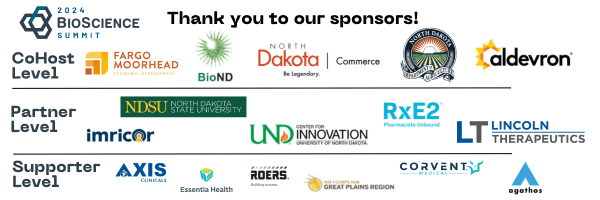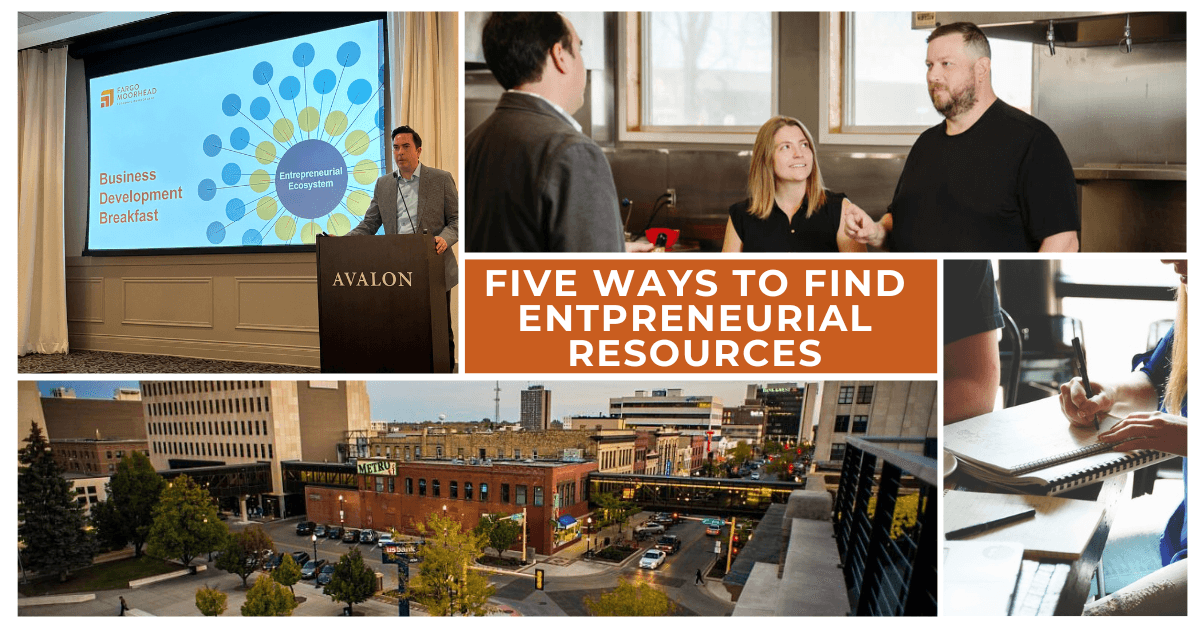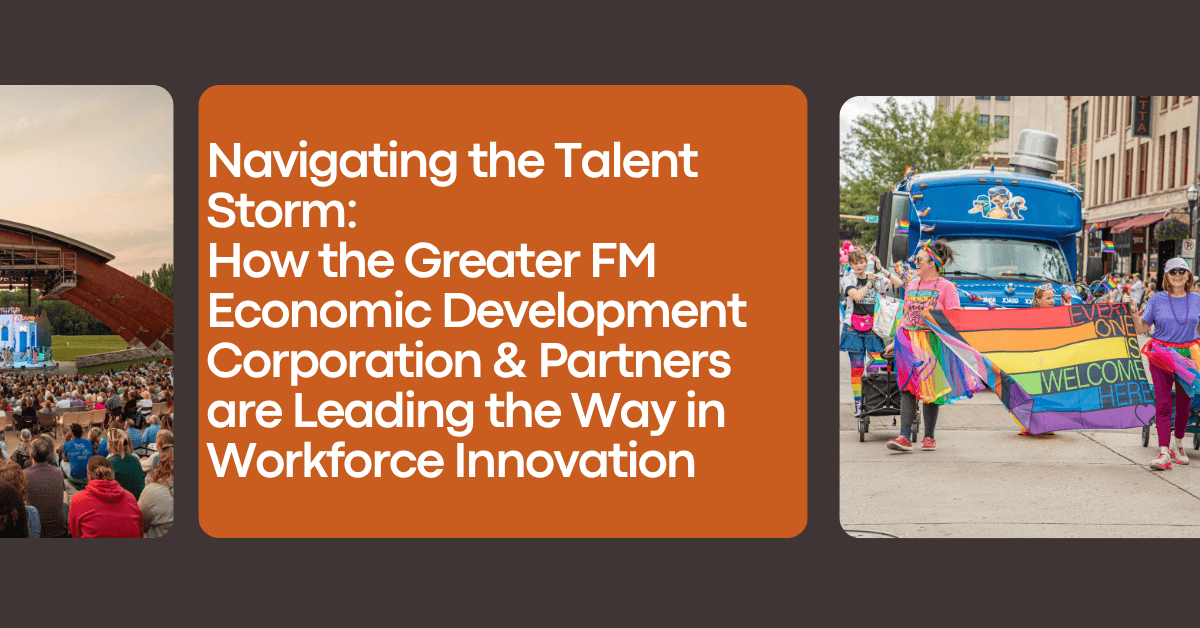BioScience Summit Showcases Collaborations Among Industry and Education
By Sarah Coomber
“Collaboration” was the watchword of the 2024 BioScience Summit, held Sept. 17-18 in Fargo.
Drawing members of the industrial, higher education and entrepreneurial sectors, the conference sparked conversations and connections among the more than 300 attendees from 16 states, and Israel, Norway and Singapore.
Citing a worldwide biotechnology market of $1.3 trillion, Bioscience Association of North Dakota (BioND) executive director Richard Glynn said the time is right to capture more of those dollars in North Dakota—particularly with the state’s powerful incentive packages.
A biotech magnet on the Northern Plains
When BioND was established in 2010, the only substantial foothold biotechnology had in the region was Aldevron, Glynn said.
Founded in Fargo in 1998, Aldevron’s 2024 annual revenues exceeded $750 million. The company now exerts what North Dakota Commerce Commissioner Josh Teigen described as a “gravitational pull,” bringing in talent, capital and infrastructure.
Creating plasmid DNA, proteins, enzymes and other biologicals, Aldevron has spun off two additional companies, Genovac and Agathos Biologics, also based in Fargo.
Just five years ago, the Fargo-Moorhead MSA’s biotechnology sector was valued at $100 million in Gross Regional Product. Today, it’s at more than $300 million, said Joe Raso, President and CEO of the Greater Fargo Moorhead Economic Development Corporation.
The Red River Valley has momentum, and, as Teigen said, there is plenty of room to grow.
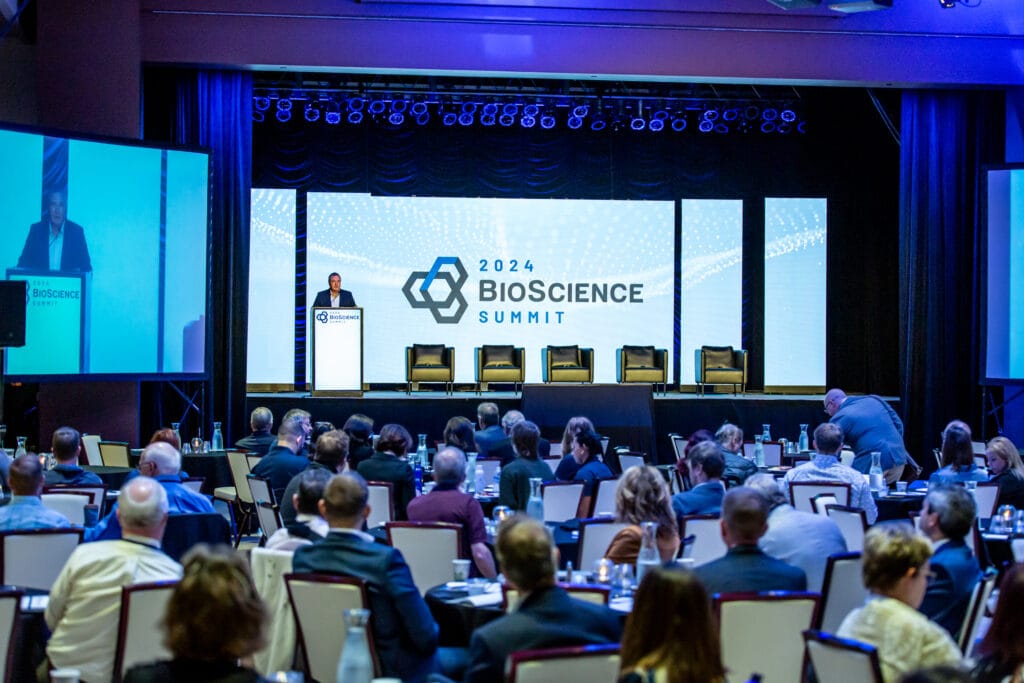
Cooperating to develop a workforce
Representatives of area colleges and universities were front and center at this year’s Summit in panel discussions, a Career Exploration event and conversations among industry and academic professionals.
While industry makes the local economic engine hum, area educational institutions are bringing in big research dollars and lots of energy to help prepare the next generation of bioscience employees and educators. In fiscal year 2023, North Dakota State University’s research award expenditures amounted to $190 million, and University of North Dakota’s hit $182 million. Home to nearly 30,000 college students, the two universities are intent on collaborating.
Sitting side by side for a panel discussion about developing the next generation of biotech talent, professors from NDSU and UND spoke of their inter-school collaborations. UND biomedical engineering professor Ryan Striker declared, “If you’re looking for competition (between our schools), you won’t find it in the biomedical engineering program.”
UND president Andrew Armacost shared a specific way the two universities cooperate: UND biomedical students are required to include an NDSU faculty member on their evaluation committees, and NDSU students must include a UND member on theirs.
Colleen Fitzgerald, NDSU vice president of research and creative activity, noted the warmth and collegiality she’s observed since taking her post three years ago.
“That’s North Dakota,” she said.
Across the river in Moorhead, Concordia College is leveraging resources to encourage students to consider bioscience careers, said chemistry department chair Julie Mach. With a $2.5 million National Science Foundation grant, the school’s CLIMB (Concordia Leads: Instructing and Mentoring in Biotechnology) Scholarship is supporting academically talented students with financial need who have an interest in biotechnology. The first cohort of 12 started in fall 2024, with 24 additional spots available in the coming years.
The CLIMB program’s goal is fourfold: recruit, retain, mentor and prepare students, said chemistry professor and CLIMB director Mark Jensen.
This involves setting them up with guaranteed internships where they can get vocational guidance, knowledge and experiences from local industry partners such as Aldevron, Genovac and others.
“We need to have students hear from those industries to get excited,” Mach said.
But students aren’t the only ones who get excited when they connect with industry.
In her keynote address, “How Medline Makes Healthcare Run Better,” Margaret Halstead, vice president of health economics and market access, said her company benefits from hiring new graduates and entrusting them with multi-million-dollar accounts.
Young people bring new perspectives and strategies that the Northfield, Illinois-based medical-surgical product manufacturer and supply chain provider harnesses to improve existing products and solve healthcare-related problems.
“What they do in innovating is incredible to see,” she said.
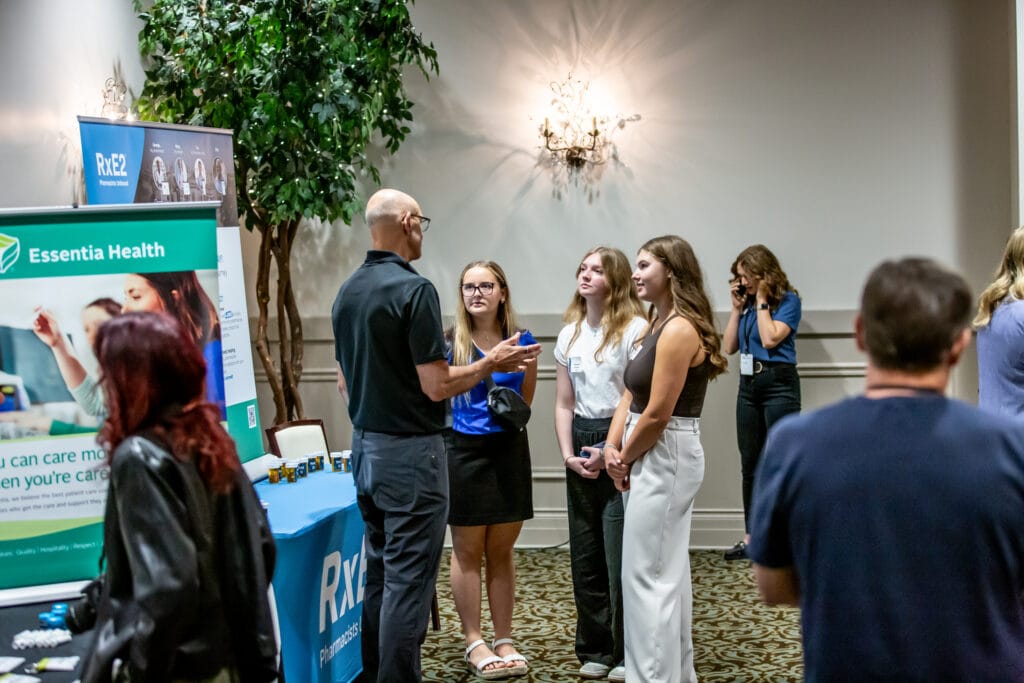
Retaining local talent
With 30,000 jobs currently available in North Dakota, Commerce Commissioner Teigen emphasized the importance of both attracting and retaining graduates who might be drawn to places better known for bioscience industries, like the Twin Cities, Silicon Valley or Boston.
“Our most valuable export is our people,” he said.
Answering that call, this year’s Career Exploration event featured 22 area companies and universities who shared local bioscience opportunities with university and high school students.
“We’re trying to keep talent here,” said Donovan McGinley-Colman, a senior scientist at Genovac.
An NDSU alumnus who interned with Aldevron, McGinley-Colman is among those who left the area after graduation, returning home to the Twin Cities for a laboratory position. Soon, however, he was drawn back to Fargo for a position at Genovac.
Genovac now gives high school students supervised opportunities to apply their science skills in the labs, as well as offering internship experiences to university students.
“It’s a great way to give them a look into science,” he said.
At the Career Exploration event, NDSU student volunteers drew high schoolers over to the Genovac booth with a contest: Use a pipette to transfer exactly 1 milliliter of water onto a scale to win a prize.
Horace High School seniors Lynnzee, Madeline and Amelia—interested in studying optometry, psychology and medical lab science, respectively—took up the challenge and were rewarded for their efforts with stickers and origami microscopes.
They were at the Summit with 14 other seniors in Horace’s health science class.
“My goal is to expose them to as much as I can,” said Horace High School teacher Jessie Pestel, who also works as a paramedic with Sanford Health.
Pestel said the Summit opened her eyes to new local opportunities in healthcare and biotech—options she can encourage her students to explore as they look to the future.
*
The BioScience Summit was organized and co-hosted in Fargo by the Greater Fargo Moorhead Economic Development Corporation (GFMEDC), Bioscience Association of North Dakota (BioND), North Dakota Department of Agriculture, the North Dakota Department of Commerce and Aldevron.
